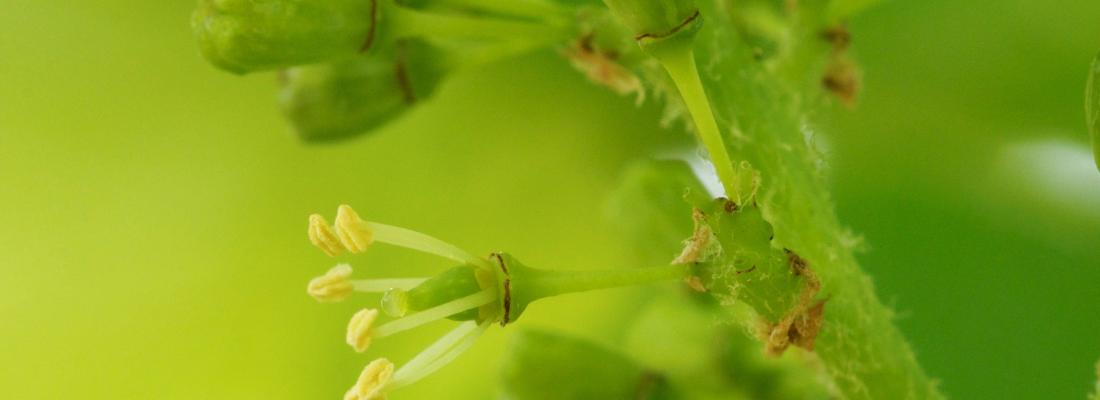Food, Global Health Reading time 2 min
Changes produced in the grapevine sexual system during domestication
Published on 07 September 2020

Flowering plants tend to be hermaphrodites, however, in about 6% of the species, sexes are separated, resulting in male and female plants. A situation not unlike that of many animals. Species with separate sexes, known as dioecious in botany, are over-represented among cultivated plants (approx. 20%). In some cases, both the cultivated plant and its wild ancestor are dioecious—date palm, asparagus, persimmon tree—but in other species, domestication results in a reversion to hermaphroditism—grapevine, papaya, strawberry. This change in their sexual system has been a key factor in the domestication of grapevine and the production of grapes. In fact, if the cultivated grapevine was not a hermaphrodite, it would be necessary to plant males to pollinate female plants in order to produce grapes. In this scenario, the presence of males, which do not produce fruit, would be indispensable and it would come with the risk of imperfect fertilization and, consequently, the production of imperfect grapes. But what were the changes produced in the sexual system of the grapevine during domestication?
To answer this question, researchers from INRAE, the CNRS, and Claude Bernard University Lyon 1 have sequenced and analysed the DNA of wild grapevine, an unprecedented accomplishment. Using innovative techniques, they were able to identify multiple candidate genes involved in determining the sex of wild grapevine. One of these genes, implicated in ovule abortion in male flowers, was naturally modified in the cultivated vine and it is an excellent candidate to explain the reversion to hermaphroditism in Vitis vinifera. These studies represent a major breakthrough in our understanding of the grapevine domestication process, and the methodology applied could provide insights into the changes produced in the sexual system of other dioecious cultivated plants.
|
Reference Hélène Badouin, Amandine Velt, François Gindraud, Timothée Flutre, Vincent Dumas, Sonia Vautrin, William Marande, Jonathan Corbi, Erika Sallet, Jérémy Ganofsky, Sylvain Santoni, Dominique Guyot, Eugenia Ricciardelli, Kristen Jepsen, Jos Käfer, Hélène Berges, Eric Duchêne, Franck Picard, Philippe Hugueney, Raquel Tavares, Roberto Bacilieri, Camille Rustenholz & Gabriel A. B. Marais. 7 September 2020, Genome Biology,. DOI 10.1186/s13059-020-02131-y |
